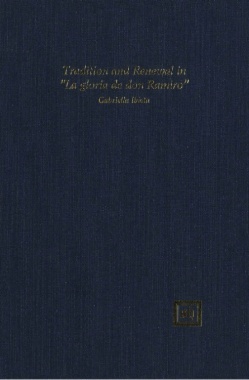The first major study in English of La Gloria de don Ramiro discusses Enrique Lareta's brilliant modernista novel in relation to nineteenth century European and Spanish-American literature, and offers lucid, fresh, and challenging critical analysis of its major themes. "Excellent book. Ibieta's research is solid, well organized, well controlled, and superbly documented; it is a model of fine scholarship." -Myron I. Lichtblau, Hispanic Review. "The reader will find this a thorough and careful examination of Larreta's literary sources." -Annella McDermott, Bulletin of Hispanic Studies.
- Cover
- Contents
- Foreword
- Introduction
- Chapter 1. La gloria de don Ramiro and the critics (1908–1985)
- A. The first twenty-five years (1908–1933)
- 1. Spain and Spanish America
- 2. France
- 3. England and the United States
- 4. Italy
- B. Varying perceptions (1934–1959)
- C. Toward new perspectives (1960–1985)
- D. Critical reportage in the literary histories
- Chapter 2. The relation to the historical novel
- A. European models
- 1. La gloria and Waverley: The unhistorical hero
- 2. La gloria and I promessi sposi: A repentant villain
- 3. La gloria and Notre-Dame de Paris: Inexorable destiny
- 4. La gloria and El Señor de Bembibre: Knight and hermit
- 5. La gloria and Salammbô: The erotics of mysticism
- B. Spanish-American echoes
- La gloria in relation to Amalia; Enriquillo; Ismael
- Chapter 3. The modernista aspect
- A. European models
- 1. La gloria and Thaïs: Ironic reversal
- 2. La gloria and the Sonatas: A morbid religiosity
- B. Spanish-American echoes
- La gloria in relation to Amistad funesta; Sangre patricia
- Chapter 4. Hagiographical elements
- A. The living models
- 1. Militant Christianity and the Santiago legend
- 2. Teresa de Ávila and the mystic way: Guiomar, Aixa, Ramiro
- 3. Why Rosa de Lima?
- B. The literary model: La gloria and La Légende de Saint Julien I'Hospitalier
- Index

